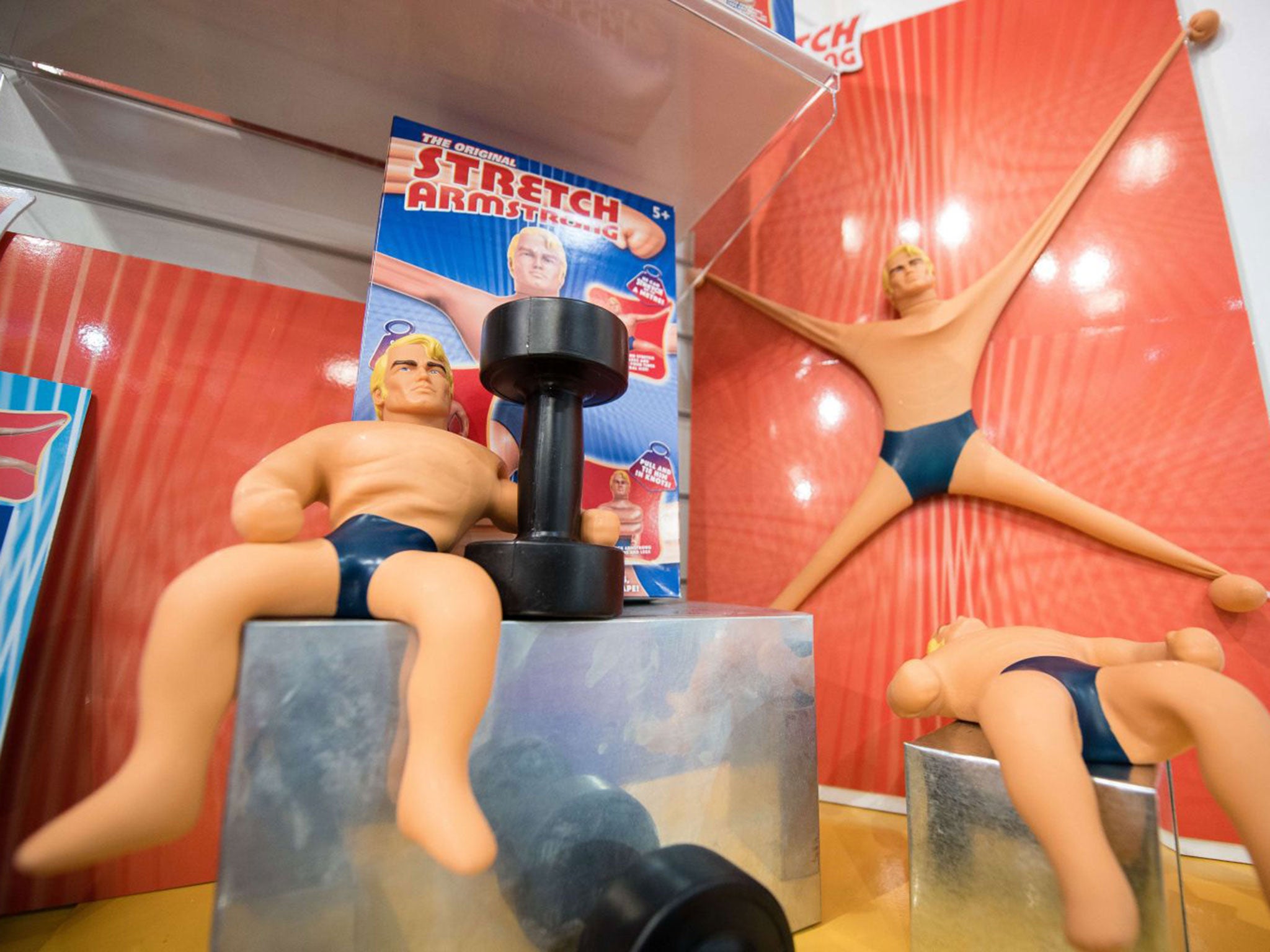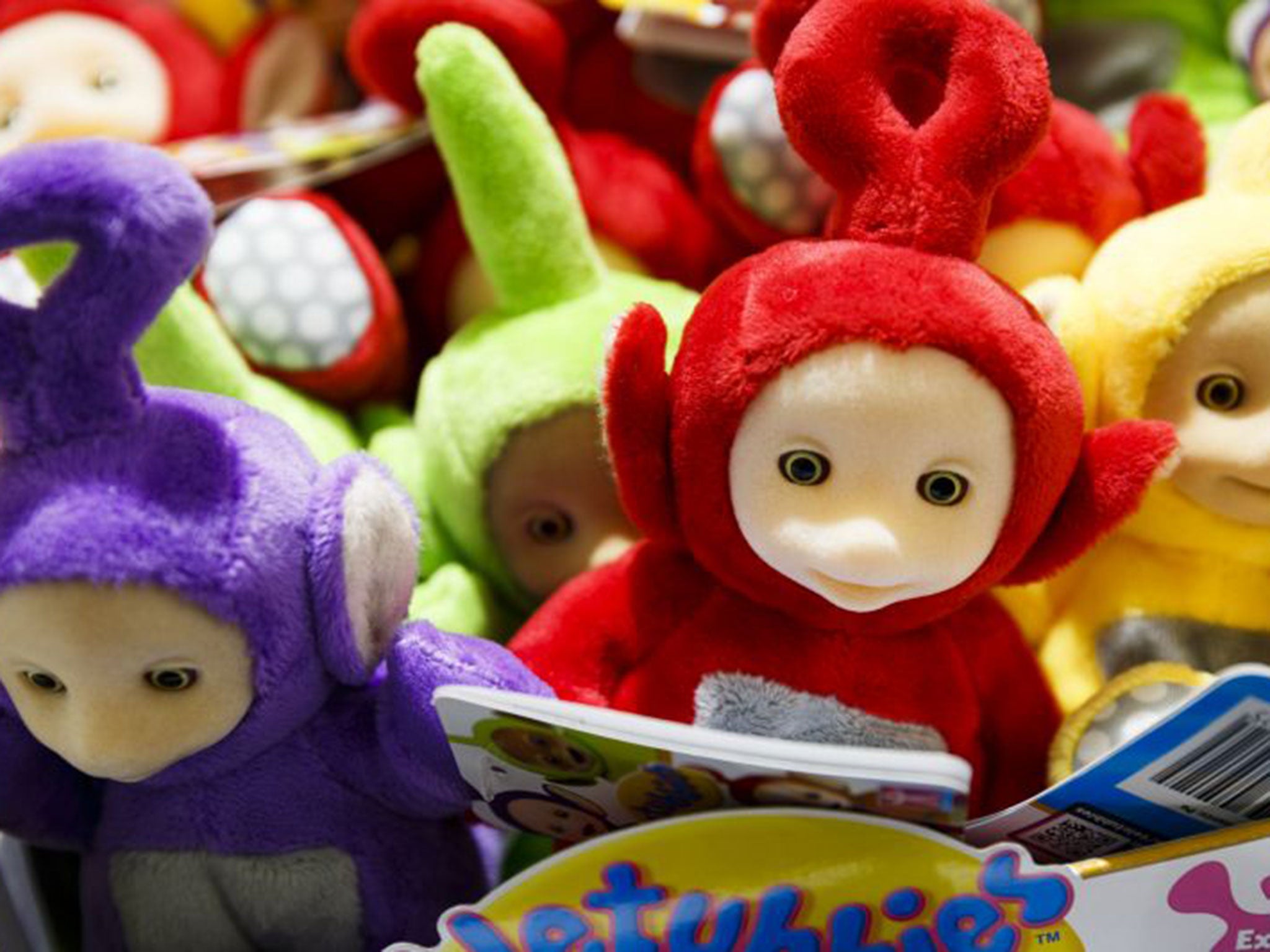Stretch Armstrong returns as low-tech favourites triumph at 2016 Toy Fair
Launched in the 1970s, relaunched in the 1990s, Stretch will return once more to shops this summer

Your support helps us to tell the story
From reproductive rights to climate change to Big Tech, The Independent is on the ground when the story is developing. Whether it's investigating the financials of Elon Musk's pro-Trump PAC or producing our latest documentary, 'The A Word', which shines a light on the American women fighting for reproductive rights, we know how important it is to parse out the facts from the messaging.
At such a critical moment in US history, we need reporters on the ground. Your donation allows us to keep sending journalists to speak to both sides of the story.
The Independent is trusted by Americans across the entire political spectrum. And unlike many other quality news outlets, we choose not to lock Americans out of our reporting and analysis with paywalls. We believe quality journalism should be available to everyone, paid for by those who can afford it.
Your support makes all the difference.He’s back, and he’s sporting his original black 1970s wrestler’s trunks.
Amid 15,000 offerings, including the first underwater toy drones and app-compatible “augmented reality” stickers, it was Stretch Armstrong, a wrestling superhero action figure first sold in 1976, that triumphed at the 2016 Toy Fair on Monday.
Launched in the 1970s, relaunched in the 1990s, Stretch will return once more to shops this summer – and that qualified him to win a Best “New” Toy Award at the exhibition in London’s Olympia.
It meant that a rubbery 40-year-old toy whose USP is that it can be tied in knots, stretched to four times its body length, and still retain its shape, is predicted by a panel of retailers to be, at £19.99, one of the best-selling toys of 2016.
And Stretch was just one part of what seemed to be an impressive haul of awards for low-tech retro toys.
His two fellow winners in the action category were the Supersize Thunderbird 3 rocket, based on a reboot of the 1960s TV series, and the Danger Mouse Mark IV Danger Car, launching on the back of last autumn’s TV comeback for a cartoon secret agent mouse who first appeared in 1981.
“Sometimes the simple stuff works the best,” said Natasha Crookes, of the toy fair’s organiser the British Toy and Hobby Association. “There is a place for enhanced technology, but kids keep coming back to toys that feed the imagination – which is all they need for things to come to life.”
Best New Toy awards
Hobbies and Vehicles
- Model Top Gun F-14A Tomcat £19.99: as flown by Maverick (Tom Cruise) in the 1986 film
- Scalextric Track Day £199.99: 21st-century update of a toy that first appeared in the late 1950s. Now with smart device option
Plush toys
- Teletubbies 8in talking toy £9.99: choose between Tinky-Winky, Dipsy, Laa-Laa and Po.
- Whizzpopping BFG £19.99: based on Roald Dahl’s Big Friendly Giant; squeeze his tummy for eight different “whizzpopper” sounds.
Playsets
- My First Railway Battery Train Set £39.99: battery-powered train running on wooden track.
“Parents,” she added, “trust the likes of Danger Mouse. They played with them as children, and now they want to share that play experience with their own kids.”
Which may explain why Character Options, the company rerelaunching Stretch Armstrong, decided to bypass his grinning, Nineties WWF-influenced look in favour of the old-school square jaw and World of Sport Saturday afternoon wrestling-style trunks.
“Much cooler than the Nineties version with the cheesy grin,” insisted Jon Elliott, 36, the product development manager in charge of styling Stretch Armstrong 2016.
So Stretch would merely be given slightly more defined facial characteristics, while possibly being made slightly thinner with more prominent abs, “for aesthetic reasons, and to make him even stretchier”.
The technology, however, would remain as it was in 1976: latex rubber filled with gelled corn syrup. And Mr Elliott’s fellow product development manager Emma Walker said that was enough for Stretch Armstrong to appeal to a new generation of children.
“There is a gap in the market,” she said, “For a simple but fun toy. App-based robotics may seem to have taken over, but play patterns never go away. If a toy is fun, it will always be fun. And kids love seeing who can stretch Stretch Armstrong the most.”
Danger Mouse, too, was getting a pretty low-tech reboot. The flashiest features of the soon-to be released, £14.99 Mark IV Danger Car, were the pop-out wings to transform it (in a child’s imagination) into a “Danger plane”. But Jonny Taylor, 40, the UK managing director of Jazwares, was still excited about the company’s “hero item” – and the Baron Greenback toy, and the talking (“Oh,crumbs!”) toy Penfold.
“This is a big deal,” he said. “I grew up with Danger Mouse. I loved every episode.”

Elsewhere, however, purveyors of the most high-tech toys were convinced their products would succeed. Joshua Farleigh, managing director of Flying Gadgets, was touting his camera-carrying £30 X-Water drone – the first toy drone, he claimed, to be capable of “flying” underwater, skimming over the surface and taking off from it.
And by Christmas, he said, he’d have the technology to make it launch into the air from underwater. You could take it to the swimming pool or the boating lake or, he said, if you still wanted to stay retro, “you could use it in the bath tub. Why not? Instead of the toy battleship, you could fly a drone in the bath.”
Join our commenting forum
Join thought-provoking conversations, follow other Independent readers and see their replies
Comments